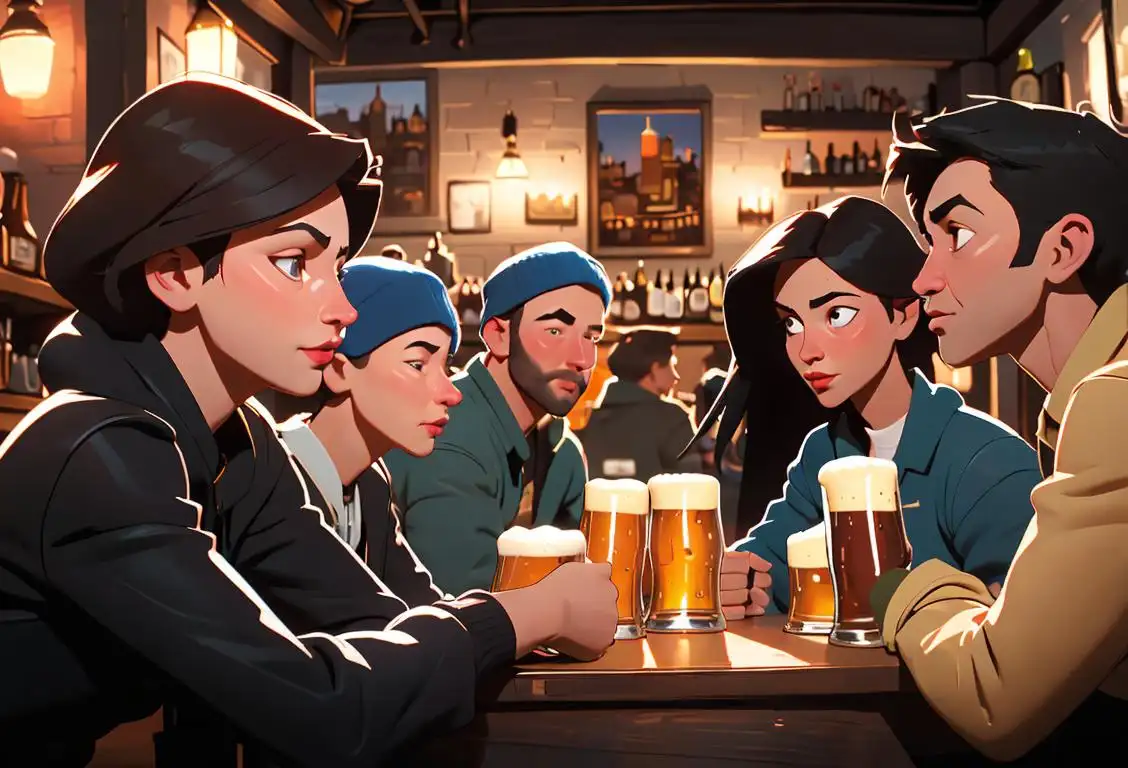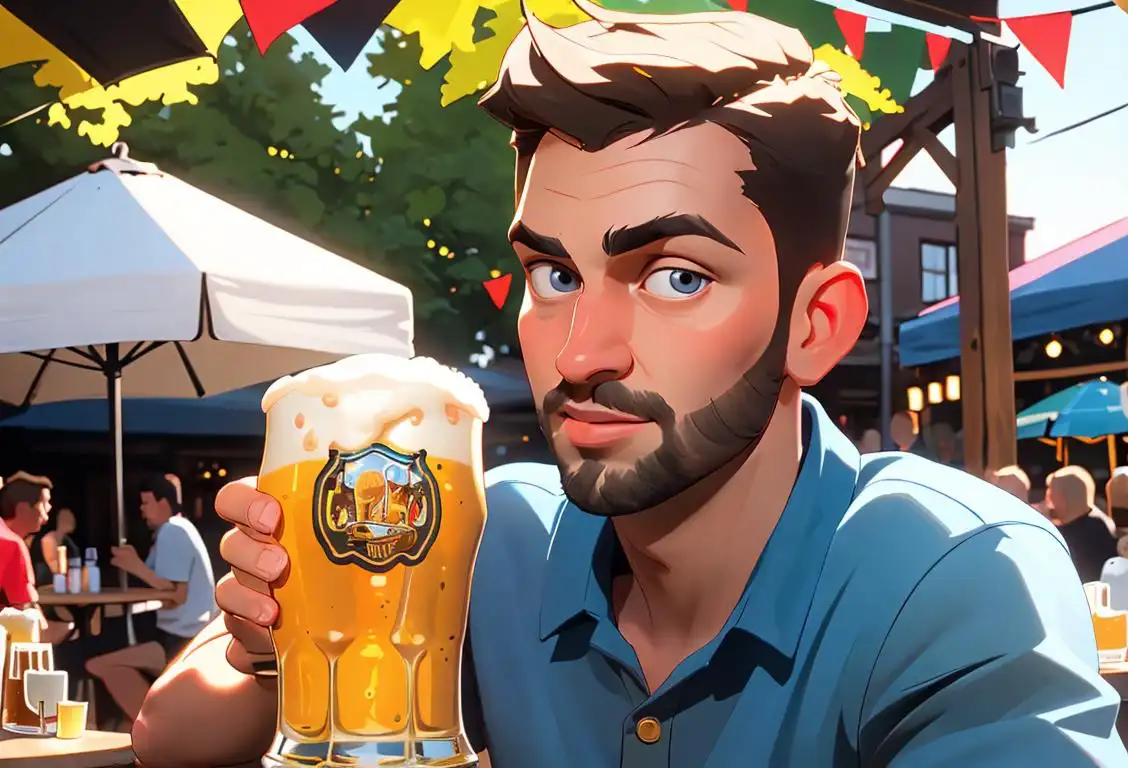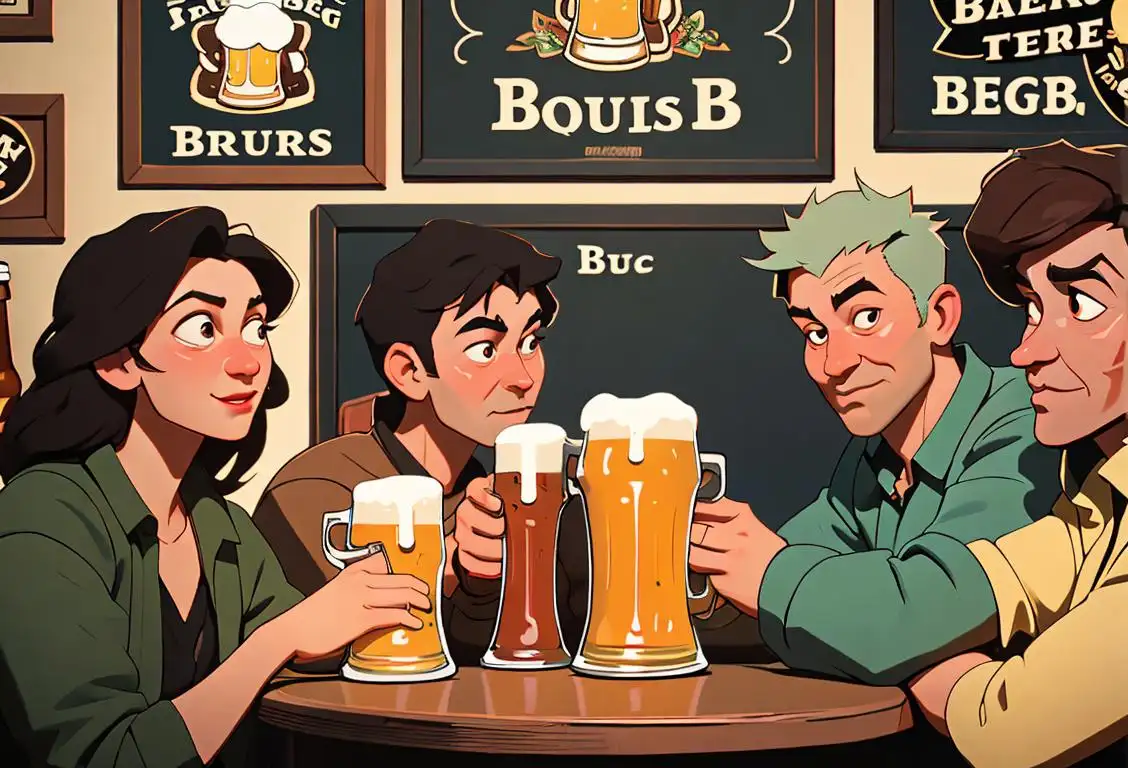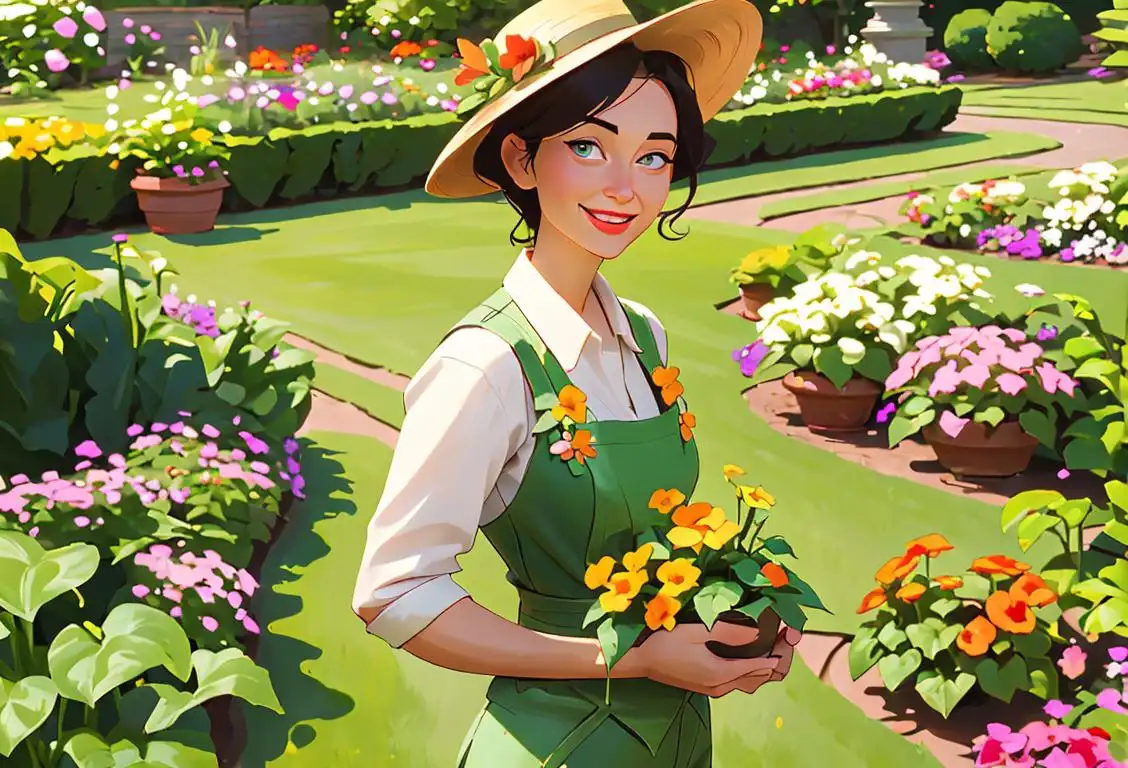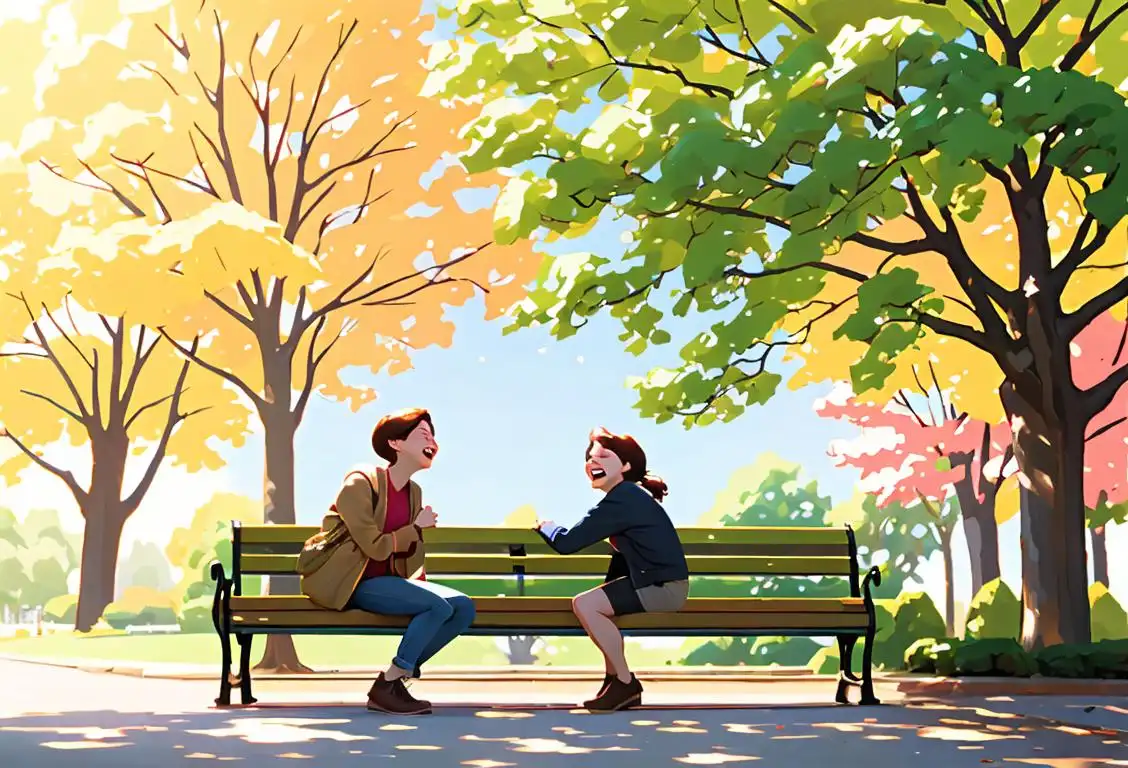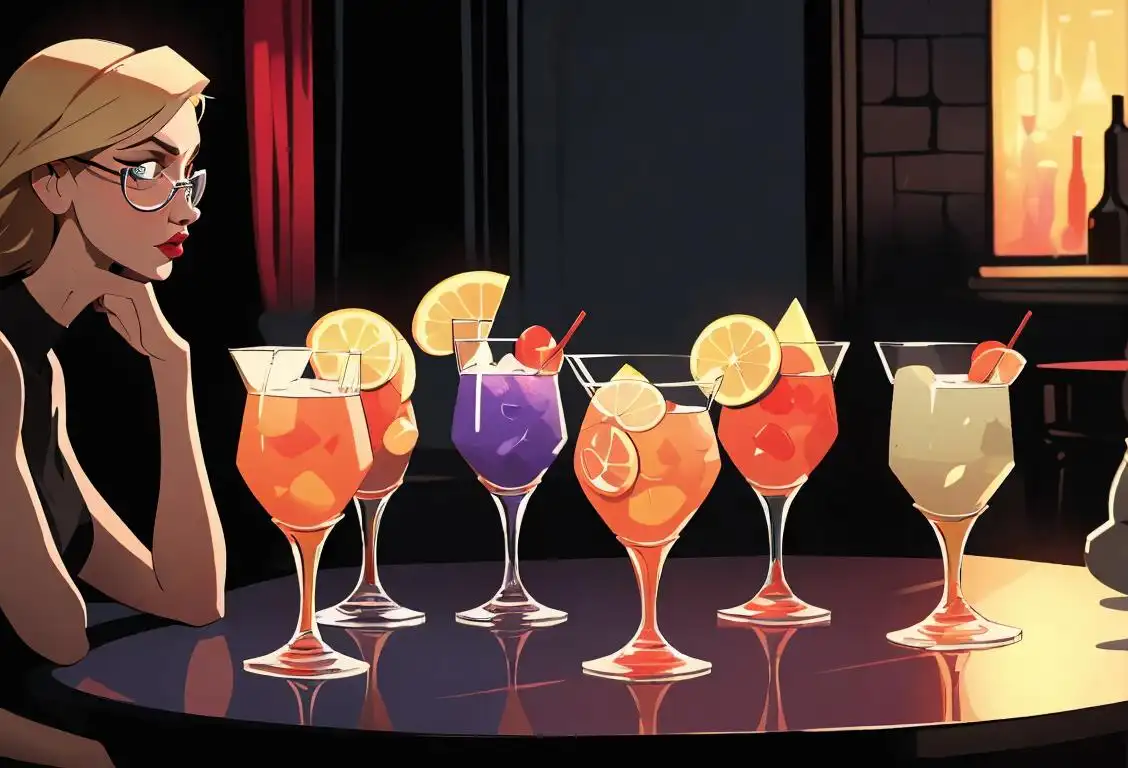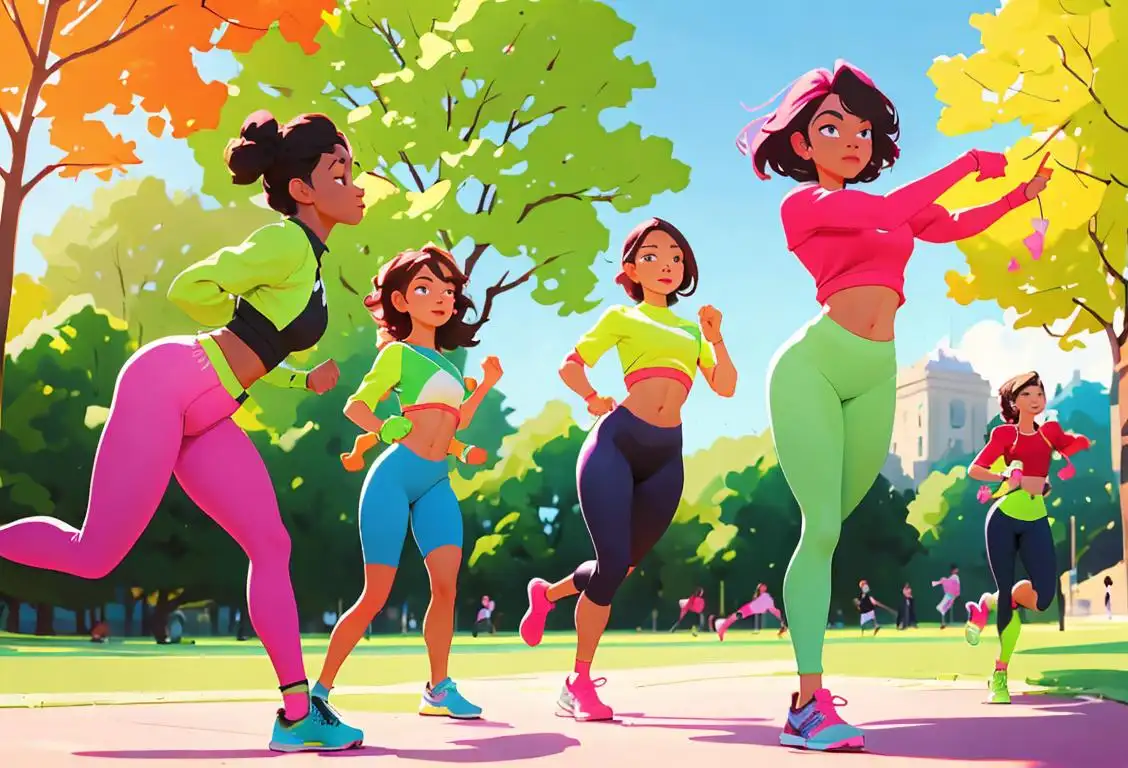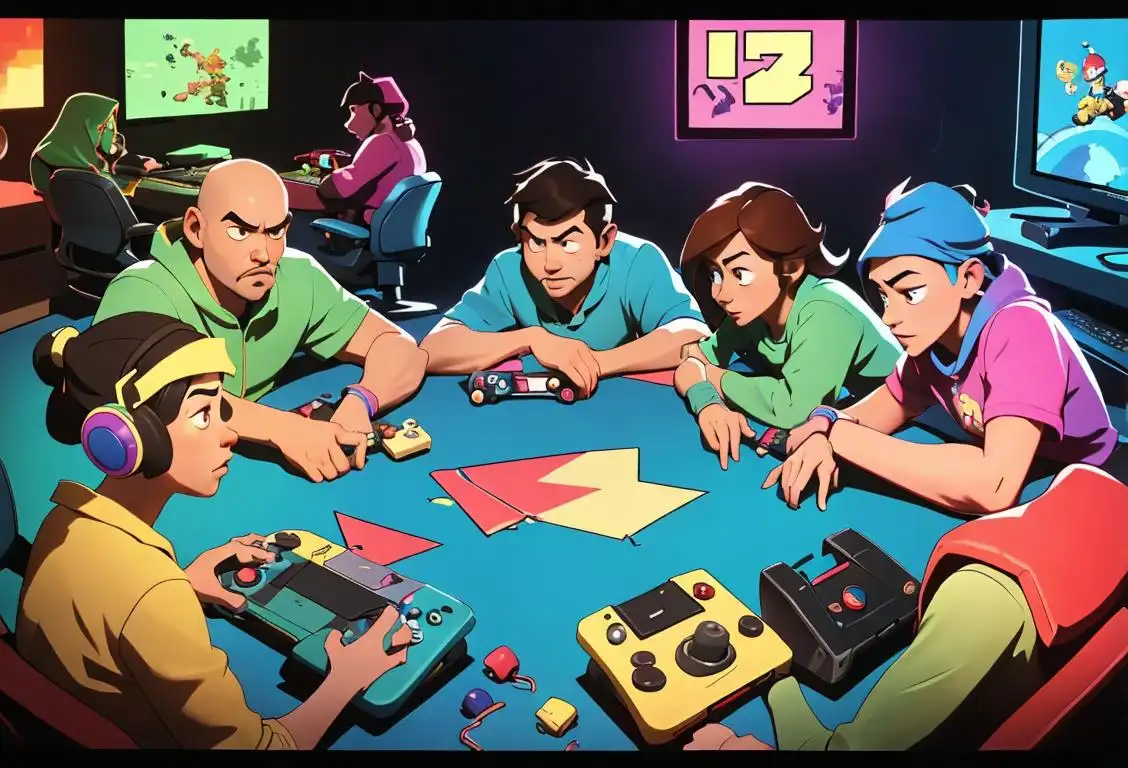National Green Beer Day
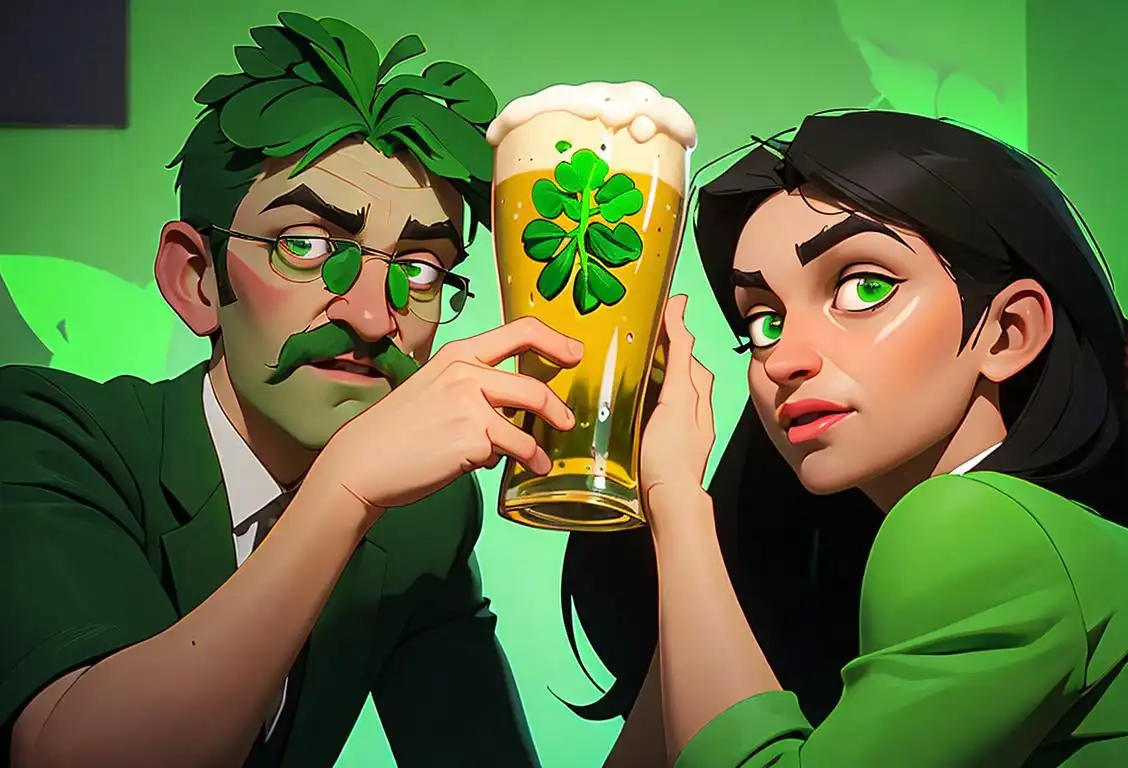
Ah, National Green Beer Day, a day when beer lovers around the world unite to celebrate the magical combination of beer and the color green. It's a day when leprechauns tap their tiny kegs and everyone's glasses are filled with emerald joy. So grab your friends, put on your greenest outfit, and get ready for a pint (or two) of green beer!
When is Green Beer Day?
It's national green beer day on the 18th March.
The Internet History of National Green Beer Day
Believe it or not, the origin of National Green Beer Day can be traced back to the internet. As the world became more connected and social media took over our lives, people started sharing photos of themselves sipping on green-tinted brews every St. Patrick's Day. It quickly became a trend, with hashtags like #GreenBeerDay and #GreenBeer taking over Twitter and Instagram.
But it wasn't until 2015 that National Green Beer Day made its official debut on the internet. On March 18th, 2015, the hashtag #NationalGreenBeerDay started trending on Twitter, and beer lovers all over the world rejoiced. From that day forward, March 18th became a day dedicated to celebrating the glorious combination of beer and the color green.
How to Celebrate National Green Beer Day
Celebrating National Green Beer Day couldn't be easier. Just find yourself a good old pint of beer and add a few drops of green food coloring. Voila! You've got yourself a festive drink ready to toast to all things green.
Gather your loved ones, put on some green attire, and throw a green beer party. You can even challenge your friends to a green beer chugging contest (please drink responsibly, of course). And don't forget to document the festivities on social media using the hashtag #NationalGreenBeerDay.
Did You Know?
Did you know that the largest glass of green beer ever poured was a whopping 3,664 liters (969.19 gallons)? It was created in Las Vegas, Nevada, on St. Patrick's Day in 2010. Now that's a lot of green suds!
History behind the term 'Green Beer'
1965
The Birth of the Tradition
The term 'green beer' was first coined in 1965 during the St. Patrick's Day celebrations. It refers to the practice of adding green food coloring to beer, giving it a vibrant and festive appearance. The idea of green beer quickly gained popularity as a way to commemorate the Irish holiday and show solidarity with the Irish community.
1914
The Birth of Green Beer
In 1914, the term 'green beer' was first used to describe a light-colored lager brewed with a generous amount of hops. This beer had a distinct pale green hue due to its high hop content. It was said to have a slightly bitter taste and a refreshing, grassy aroma. Green beer quickly gained popularity as a festive drink during St. Patrick's Day celebrations, particularly in North America.
1914
St. Patrick's Day traditions begin
St. Patrick's Day, celebrated on March 17th, is a cultural and religious holiday that marks the death of Saint Patrick, the patron saint of Ireland. This day has been celebrated for centuries with parades, wearing green, and indulging in traditional Irish food and drinks.
1914
The Birth of Green Beer
The term 'green beer' first originated in 1914 when a sea of green appeared at a St. Patrick's Day celebration in New York City. It was the result of a bartender accidentally pouring a few drops of blue dye into a beer pint. This accidental discovery gave birth to the tradition of serving green-colored beer on St. Patrick's Day, which quickly became popular among revelers and has endured for over a century.
1910
The birth of St. Patrick's Day celebrations in America
St. Patrick's Day had been celebrated in Ireland for centuries, but it wasn't until the early 20th century that it gained popularity in the United States. A wave of Irish immigrants brought their traditions with them, including the celebration of St. Patrick's Day on March 17th. In the early years, the focus was on religious observance and cultural heritage.
1904
The First St. Patrick's Day Parade
In 1904, the first official St. Patrick's Day Parade in New York City took place. The parade was a celebration of Irish culture and heritage, and it quickly became a popular annual event. As part of the festivities, some pubs started to serve 'green beer,' which was simply regular beer with a few drops of green food coloring added. The green beer became associated with St. Patrick's Day and later spread to other cities.
1914
The Start of St. Patrick's Day Celebrations
St. Patrick's Day has been celebrated in Ireland for centuries, but it wasn't until 1914 that the term 'green beer' began to gain popularity. St. Patrick's Day is a cultural and religious holiday that commemorates the death of Saint Patrick, the patron saint of Ireland. It has become a day of celebration and a symbol of Irish culture worldwide.
1777
The First St. Patrick's Day Parade in New York
The term 'green beer' has its origins in the celebration of St. Patrick's Day. The first recorded St. Patrick's Day Parade took place in New York City in 1762, organized by Irish soldiers in the British Army. However, it wasn't until 1777 that the parade was officially recognized and became an annual tradition. During the early years of the parade, Irish families and community members would gather to celebrate their heritage, often enjoying a pint of ale or beer together.
1962
Colorful Innovation
In 1962, a New York brewery called Schaefer Beer took the tradition of green beer to a new level. They introduced a green-colored beer called 'Irish Green' for St. Patrick's Day, which was achieved by adding green food coloring to their regular beer recipe. This innovative approach caught the attention of beer enthusiasts and further popularized the concept of green beer.
1914
First documented mention of green beer
In 1914, the publican of a pub in New York City called the Schnerer Club made the first documented mention of green beer. He offered this unique twist on the traditional St. Patrick's Day celebration by serving beer dyed green. It captured the attention of patrons and became an instant hit. The use of food coloring to dye the beer green is believed to have been inspired by the green associated with Irish folklore and St. Patrick's Day.
1915
The rise of 'green beer'
In 1915, the term 'green beer' started to gain popularity as a colloquial expression within Irish-American communities. It referred to regular beer that was dyed green to celebrate St. Patrick's Day. This practice started as a fun way to add an extra touch of green to the festivities.
1914
The Birth of the Shamrock Shake
In 1914, a similar green beverage called the Shamrock Shake was introduced. This mint-flavored green milkshake was initially created as a limited-time offering by a popular fast-food chain to celebrate St. Patrick's Day. The Shamrock Shake quickly gained popularity and became an annual tradition. While not technically 'green beer,' it contributed to the cultural association of anything green with St. Patrick's Day.
1914
First Mention of Green Beer
In 1914, the term 'green beer' was mentioned for the first time in relation to St. Patrick's Day celebrations. It was reported that a bar in the United States had started serving beer that had been dyed green. This innovative idea captured the attention of the public and quickly became associated with St. Patrick's Day festivities.
1926
A Dash of History
To understand the significance of green beer, it's important to delve into the history of St. Patrick's Day. The holiday originated in the early 17th century as a religious feast day honoring the patron saint of Ireland, Saint Patrick. Over time, it evolved into a celebration of Irish culture and heritage, spreading beyond the Emerald Isle to various parts of the world.
1952
Green Beer Goes Mainstream
In 1952, the term 'green beer' took on a new meaning as a beloved St. Patrick's Day tradition. Bars and restaurants across the United States started adding food coloring, typically green, to their regular light-colored beers to create an eye-catching spectacle for their patrons. This practice became a fun way to join in the St. Patrick's Day festivities and has since become a popular phenomenon.
1914
Experimentation with Green Beer Started
The tradition of dyeing beer green can be traced back to 1914 when a New York doctor named Thomas H. Curtin decided to experiment by adding a few drops of washable green dye to a keg of beer for St. Patrick's Day. The idea caught on quickly, and soon other bars and breweries began to follow suit. Initially, the green beer was created by adding blue dye to the yellowish beer to achieve the green color, but today, food coloring is typically used.
19th Century
Emerald Symbolism
The association between the color green and St. Patrick's Day can be traced back to the 19th century, when green became a symbol of Irish nationalism and pride. Wearing green clothing and accessories on St. Patrick's Day became a way for Irish immigrants in the United States to express their heritage and stand in solidarity with their compatriots.
1961
Green Beer Becomes Mainstream
In 1961, the Chicago River was accidentally dyed green while workers were using green dye to trace illegal waste discharges. This unintentional effect caught the attention of the public and became a symbol of St. Patrick's Day celebrations in Chicago. As a result, the demand for green beer skyrocketed, leading to its widespread availability and popularity across the United States. Since then, green beer has become a staple of St. Patrick's Day festivities, enjoyed by millions of people every March 17th.
2000
Craft Breweries Elevate Green Beer
In the 2000s, craft breweries began experimenting with green beers, taking the concept to a new level. Instead of relying on artificial food coloring, these breweries used natural ingredients to infuse their beers with vibrant green colors. Spirulina, matcha green tea, and even spinach were used to create naturally green beers. This shift aligned with the growing consumer demand for all-natural and organic products across various industries.
1916
The Rising Popularity of Green Beer
By 1916, green beer had gained significant popularity among both Irish-Americans and those looking to celebrate St. Patrick's Day. People enjoyed the novelty of drinking beer that matched the green theme of the holiday. The trend grew rapidly, and bars and pubs across the United States started offering green beer as a special St. Patrick's Day treat.
1952
Green beer gains popularity
Throughout the mid-20th century, the popularity of green beer grew significantly. As St. Patrick's Day became more widely celebrated across America, green beer became synonymous with the holiday. The vibrant green color added an extra element of festive fun to the already lively celebrations. Bars and pubs began offering green beer as part of their St. Patrick's Day specials, and it quickly became a tradition in many places.
1980s
Going Global
During the 1980s, the popularity of green beer began to spread beyond the United States and reach other parts of the world. It became a symbol of St. Patrick's Day celebrations and Irish culture, even in countries with no historical connection to the holiday. It is common to find bars, pubs, and breweries in various countries serving green beer on St. Patrick's Day to cater to the festive spirit and attract patrons.
1952
Green beer becomes commercialized
In 1952, the idea of serving green beer on St. Patrick's Day became commercialized when a bar owner named Joe McHale from the Bronx, New York, decided to dye his beer green for the holiday. The novelty caught the attention of customers and soon spread to other bars and pubs.
1952
Green Beer Goes Mainstream
In 1952, the tradition of serving green beer on St. Patrick's Day reached a new level of popularity. A pub owner named Tom Morrissey, from New York City, promoted green beer as a way to attract customers during the holiday. He used a secret recipe to dye the beer green and created a buzz around the green libation. This successful marketing move helped solidify green beer as a staple of St. Patrick's Day celebrations.
Present
Green Beer Continues to Inspire
Today, green beer continues to be a beloved part of St. Patrick's Day celebrations, enjoyed by people of all ages. Whether they're dyeing their own beer at home or reveling in the festivities at a local pub, the tradition of green beer has become deeply ingrained in the cultural fabric of St. Patrick's Day. It symbolizes a fun and lighthearted approach to celebrating Irish heritage and the joy of the holiday itself.
Early 20th Century
Beer and Parades
The tradition of parades on St. Patrick's Day gained momentum in the early 20th century, particularly in cities with large Irish populations like New York and Boston. Beer became closely associated with these festivities, and green quickly became the dominant color of choice to reflect the Irish spirit. Green hats, green clothing, and eventually green beer became iconic symbols of the holiday.
1952
The Influence of Modern Food Coloring
In 1952, the availability of modern food coloring revolutionized the production of green beer. Previously, bars would use natural ingredients like spinach or green vegetables to tint the beer green. With food coloring, it became much easier to achieve a vibrant and consistent green color. This contributed to the continued popularity of green beer during St. Patrick's Day celebrations.
1990s
Craft Beer Revolution
With the rise of the craft beer movement in the 1990s, many breweries started experimenting with unique flavors and appearances. Green beer became an opportunity for craft brewers to showcase their creativity by offering different variations of green-colored beer, often using natural ingredients like spirulina or matcha. This trend brought a new level of quality and taste to green beer and expanded its appeal to a wider audience.
Present Day
A Cultural Symbol of St. Patrick's Day
Today, 'green beer' has become synonymous with St. Patrick's Day and is often associated with the festive and lively atmosphere of the holiday. While some may argue that the tradition of drinking green beer has strayed from its Irish roots, it has undoubtedly become an integral part of the modern St. Patrick's Day celebration. Bars, pubs, and breweries around the world join in the annual tradition by offering green-tinted brews to patrons looking to immerse themselves in the spirit of the holiday.
1980s
Commercial production of green beer
In the 1980s, the commercial production of green beer began. Brewing companies recognized the demand for green beer during St. Patrick's Day celebrations and started producing their own versions. Instead of relying on food coloring, these companies utilized natural ingredients such as spirulina or green malts to achieve the desired green hue. This innovation helped meet the growing demand while also appealing to those who preferred a more natural approach.
1980s
Craft Breweries Embrace Green
During the 1980s, the craft beer movement began to gain momentum in the United States. As craft breweries emerged, they started experimenting with unique and unconventional brews. In line with this creative spirit, some breweries began brewing specially crafted green beers for St. Patrick's Day. These green brews often incorporated natural ingredients like spinach or spirulina to achieve the vibrant color, deviating from the traditional food coloring approach.
1982
Food coloring replaces traditional method
Before 1982, the process of coloring beer green involved using a powder called 'wash blue' that contained a toxic copper compound. However, due to health concerns, the use of this powder was discontinued, and food coloring such as green dye or drops became the preferred method for creating green beer.
1998
Commercialization and Modern Tradition
Throughout the years, green beer has become increasingly commercialized. Many breweries and bars now produce and sell green beer specifically for St. Patrick's Day. It has become a symbol of the holiday, and people look forward to the tradition of raising a glass of green beer to celebrate their Irish heritage, even if they have no Irish ancestry.
Present Day
A Global Celebration
Today, the tradition of drinking green beer on St. Patrick's Day has spread far beyond the shores of Ireland and the United States. It has become a global phenomenon, with bars and pubs around the world serving green-tinted brews on March 17th. While the idea of green beer may have originated as a playful tribute to Irish heritage, it now represents the festive spirit and joy that accompany St. Patrick's Day celebrations worldwide.
Present
Green beer as a symbol of St. Patrick's Day
Today, green beer has become an iconic symbol of St. Patrick's Day celebrations in many countries. It is often enjoyed in bars, pubs, and social gatherings as a way to embrace the festive spirit and show appreciation for Irish culture. The popularity of green beer continues to grow each year, making it a cherished tradition on this special day.
1960-1970s
The Introduction of Green Beer
While the exact origin of adding green food coloring to beer is unclear, it gained significant attention in the 1960s and 1970s. Bars and pubs started experimenting with dyeing their beer green to cater to the growing demand during St. Patrick's Day celebrations. What began as a fun novelty soon turned into a widespread tradition embraced by beer enthusiasts around the world.
Present Day
Green Beer Tradition
Today, green beer has firmly established itself as a tradition in St. Patrick's Day celebrations around the world. From large-scale beer festivals to intimate pub gatherings, people eagerly anticipate the opportunity to raise a pint of green beer in honor of Ireland's patron saint. While originally an accidental innovation, green beer continues to embody the festive spirit and cultural significance of St. Patrick's Day.
Present
Global phenomenon and creative variations
Today, the tradition of drinking green beer on St. Patrick's Day has spread beyond America and can be found in various parts of the world. People continue to enjoy this colorful libation as a way to celebrate the holiday and display their Irish spirit. Along with the classic green beer, creative variations have emerged, such as green craft beers infused with unique flavors and even green non-alcoholic alternatives, allowing people of all ages to partake in the tradition.
Present Day
Global Celebration and Modern Twists
Today, the consumption of green beer has become synonymous with St. Patrick's Day festivities. Many breweries and bars offer specially dyed green beer to honor the occasion. While some purists frown upon the practice, considering it a departure from traditional brewing methods, the phenomenon continues to be embraced by those seeking a festive and memorable way to celebrate Irish culture.
Did you know?
Did you know that the largest glass of green beer ever poured was a whopping 3,664 liters (969.19 gallons)? It was created in Las Vegas, Nevada, on St. Patrick's Day in 2010. Now that's a lot of green suds!Tagged
fun celebration green beerFirst identified
18th March 2015Most mentioned on
18th March 2015Total mentions
292Other days
Green Beer Day
Beer Lovers Day
Lager Day
Beer Beer Day
Hoe Day
Friend Day
Vodka Day
Fitness Day
Bestfriends Day
Video Game Day
